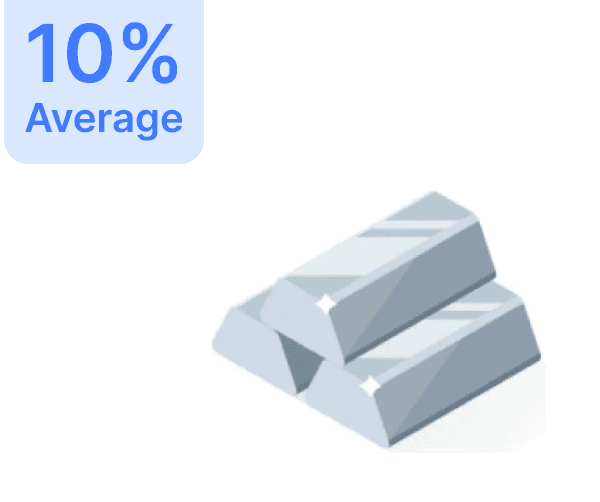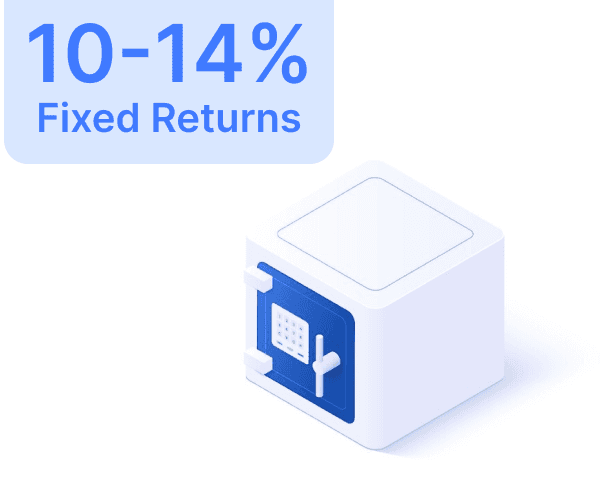
Trusted by 1L+ Indians
Want to Achieve any of the below Goals upto 80% faster?

Dream Home

Dream Wedding

Dream Car

Retirement

1st Crore


Dream Home

Dream Wedding

Dream Car

Retirement

1st Crore


Trusted by 1L+ Indians
Want to Achieve any of the below Goals upto 80% faster?

Dream Home

Dream Wedding

Dream Car

Retirement

1st Crore


Dream Home

Dream Wedding

Dream Car

Retirement

1st Crore


Trusted by 3 Crore+ Indians
Want to Achieve any of the below
Goals upto 80% faster?

Dream Home

Dream Wedding

Dream Car

Retirement

1st Crore

Trusted by 3 Crore+ Indians
Want to Achieve any of the below
Goals upto 80% faster?

Dream Home

Dream Wedding

Dream Car

Retirement

1st Crore

Trusted by 3 Crore+ Indians
Want to Achieve any of the below Goals upto 80% faster?

Dream Home

Dream Wedding

Dream Car

Retirement

1st Crore


Trusted by 3 Crore+ Indians
Want to Achieve any of the below Goals upto 80% faster?

Dream Home

Dream Wedding

Dream Car

Retirement

1st Crore

Financial Year and Assessment Year - Difference Between FY and AY
Financial Year and Assessment Year - Difference Between FY and AY



May 10, 2023
5 Minutes




Understanding Financial Year and Assessment Year in India: A Comprehensive Guide
In the intricate landscape of India's fiscal calendar, comprehending the nuances of Financial Year (FY) and Assessment Year (AY) is essential for individuals navigating the tax system. This guide aims to elucidate the concepts, highlight the recent trends, and underscore the crucial differences between FY and AY, providing clarity to taxpayers.
1. The Indian Fiscal Calendar: FY and AY
In India, the financial year commences on April 1 and concludes on March 31. For instance, AY 2023-24 corresponds to the review year for FY 2022-23. It's imperative to note that, under certain circumstances, the financial year may deviate from the previous year.
2. Assessment and Financial Years in Recent Times
Let's delve into the recent years' breakdown of the Financial Year, Previous Year, and Assessment Year:
April 2018 - March 2019:
Financial Year: 2018-19
Previous Year: 2018-19
Assessment Year: 2019-20
April 2019 - March 2020:
Financial Year: 2019-20
Previous Year: 2019-20
Assessment Year: 2020-21
April 2020 - March 2021:
Financial Year: 2020-21
Previous Year: 2020-21
Assessment Year: 2021-22
April 2021 - March 2022:
Financial Year: 2021-22
Previous Year: 2021-22
Assessment Year: 2022-23
April 2022 - March 2023:
Financial Year: 2022-23
Previous Year: 2022-23
Assessment Year: 2023-24
3. Deciphering the Distinction: AY vs. FY
Understanding the disparity between the Assessment Year and Financial Year is crucial for individuals managing their finances and tax obligations. Key distinctions include:
Financial Year:
The period when income is earned.
The timeframe for salaried professionals and senior citizens to accumulate income.
Assessment Year:
Follows the financial year.
The period for evaluating and taxing the income earned in the preceding financial year.
Involves the filing of Income Tax Returns (ITR) using specialized forms tailored for the assessment and taxation of the financial year's income.
4. Significance of Assessment Year in ITR Forms
The inclusion of an Assessment Year in Income Tax Return (ITR) forms is pivotal due to the temporal misalignment between income generation and taxation. Since income for a financial year is assessed and taxed in the subsequent year, the concept of Assessment Year becomes integral to the tax-filing process. It ensures that income is not taxed before it is earned, offering a fair and systematic approach to taxation.
Conclusion:
Navigating the Temporal Dynamics of Taxation
In conclusion, grasping the intricacies of the Financial Year and Assessment Year is paramount for individuals aiming to navigate India's taxation system effectively. Whether evaluating recent fiscal trends or comprehending the rationale behind the Assessment Year in ITR forms, this guide serves as a comprehensive resource. As taxpayers engage with the evolving financial landscape, a nuanced understanding of these temporal dynamics enhances financial acumen and promotes informed decision-making.
Understanding Financial Year and Assessment Year in India: A Comprehensive Guide
In the intricate landscape of India's fiscal calendar, comprehending the nuances of Financial Year (FY) and Assessment Year (AY) is essential for individuals navigating the tax system. This guide aims to elucidate the concepts, highlight the recent trends, and underscore the crucial differences between FY and AY, providing clarity to taxpayers.
1. The Indian Fiscal Calendar: FY and AY
In India, the financial year commences on April 1 and concludes on March 31. For instance, AY 2023-24 corresponds to the review year for FY 2022-23. It's imperative to note that, under certain circumstances, the financial year may deviate from the previous year.
2. Assessment and Financial Years in Recent Times
Let's delve into the recent years' breakdown of the Financial Year, Previous Year, and Assessment Year:
April 2018 - March 2019:
Financial Year: 2018-19
Previous Year: 2018-19
Assessment Year: 2019-20
April 2019 - March 2020:
Financial Year: 2019-20
Previous Year: 2019-20
Assessment Year: 2020-21
April 2020 - March 2021:
Financial Year: 2020-21
Previous Year: 2020-21
Assessment Year: 2021-22
April 2021 - March 2022:
Financial Year: 2021-22
Previous Year: 2021-22
Assessment Year: 2022-23
April 2022 - March 2023:
Financial Year: 2022-23
Previous Year: 2022-23
Assessment Year: 2023-24
3. Deciphering the Distinction: AY vs. FY
Understanding the disparity between the Assessment Year and Financial Year is crucial for individuals managing their finances and tax obligations. Key distinctions include:
Financial Year:
The period when income is earned.
The timeframe for salaried professionals and senior citizens to accumulate income.
Assessment Year:
Follows the financial year.
The period for evaluating and taxing the income earned in the preceding financial year.
Involves the filing of Income Tax Returns (ITR) using specialized forms tailored for the assessment and taxation of the financial year's income.
4. Significance of Assessment Year in ITR Forms
The inclusion of an Assessment Year in Income Tax Return (ITR) forms is pivotal due to the temporal misalignment between income generation and taxation. Since income for a financial year is assessed and taxed in the subsequent year, the concept of Assessment Year becomes integral to the tax-filing process. It ensures that income is not taxed before it is earned, offering a fair and systematic approach to taxation.
Conclusion:
Navigating the Temporal Dynamics of Taxation
In conclusion, grasping the intricacies of the Financial Year and Assessment Year is paramount for individuals aiming to navigate India's taxation system effectively. Whether evaluating recent fiscal trends or comprehending the rationale behind the Assessment Year in ITR forms, this guide serves as a comprehensive resource. As taxpayers engage with the evolving financial landscape, a nuanced understanding of these temporal dynamics enhances financial acumen and promotes informed decision-making.
Author



Pluto Team
Share with your friends
Help you friends in learning more about personal finance by share this blog.
Help you friends in learning
more about personal finance
by share this blog.
Help you friends in learning more about personal
finance by share this blog.
Silimar Blogs


Axis Bank Credit Card Net Banking
Axis Bank Credit Card Net Banking
August 5, 2024




PNB Fixed Deposit (FD) Interest Rates
PNB Fixed Deposit (FD) Interest Rates
August 5, 2024




Linking Aadhaar to Your Punjab National Bank Account
Linking Aadhaar to Your Punjab National Bank Account
August 5, 2024




PNB SIP Calculator
PNB SIP Calculator
August 5, 2024




How to Close a PNB Account Online & Offline?
How to Close a PNB Account Online & Offline?
August 5, 2024




TDS Refund - How to Claim TDS Refund
TDS Refund - How to Claim TDS Refund
August 5, 2024


View More
Download App
Explore More
Managing assets totalling over 1 crore+



